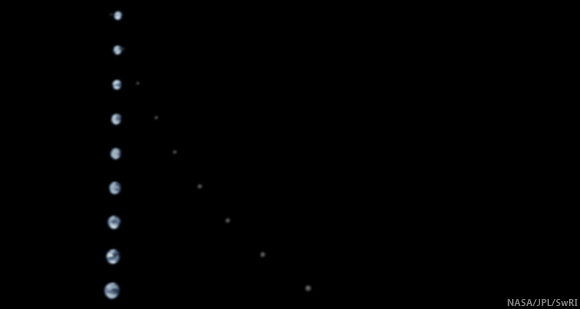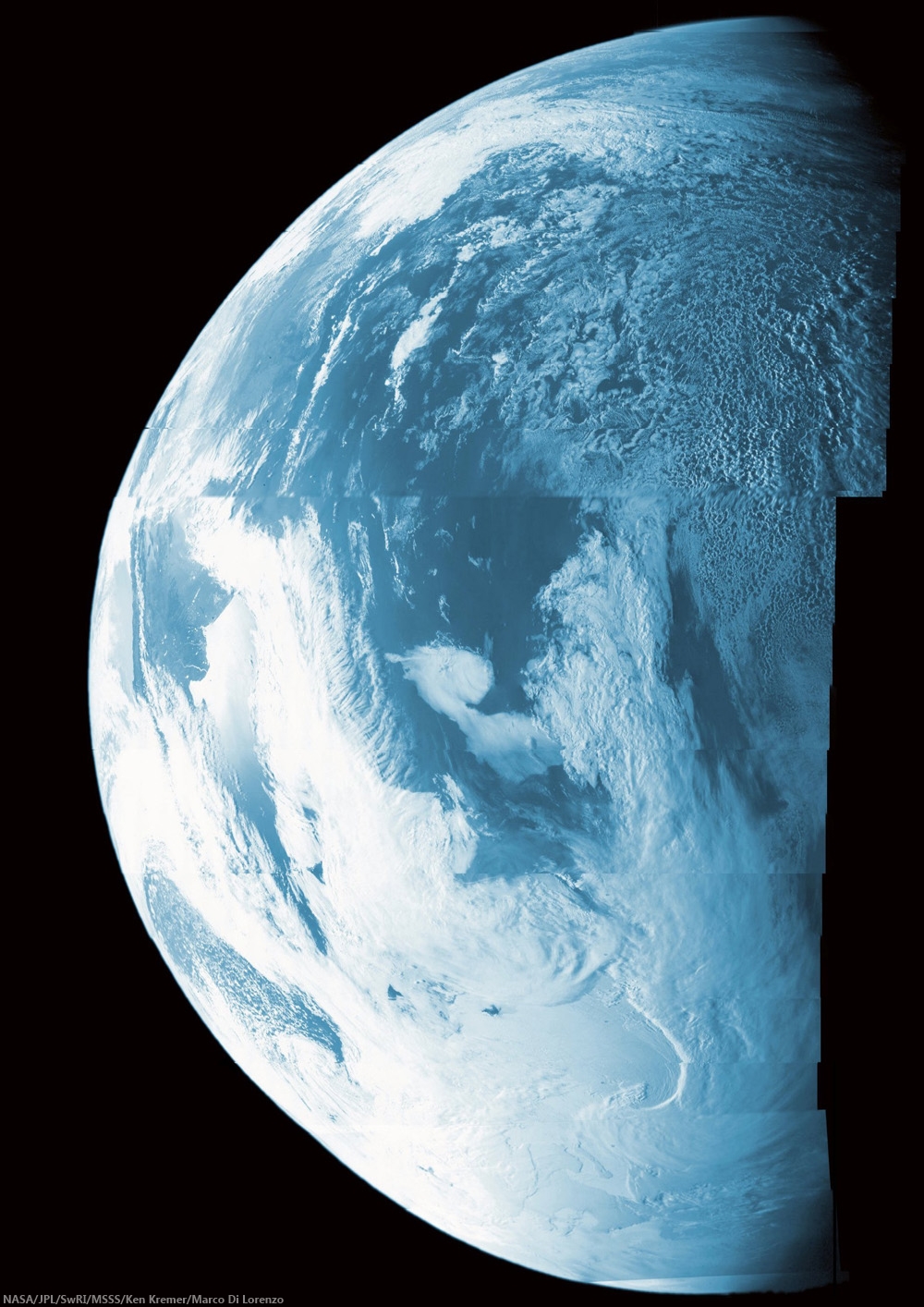"Earth and Moon as seen from passing spacecraft"
D C AgleJet Propulsion Laboratory
Steve Cole
NASA Headquarters
When NASA’s Juno spacecraft flew past Earth on October 9, 2013, it received a boost in speed of more than 7.3 kilometers per second, which set it on course for a July 4, 2016 rendezvous with Jupiter. One of Juno's sensors, a faint star tracking camera, also had a unique view of the Earth-Moon system. The result was an intriguing, if low-resolution, glimpse of what it would be like to approach our worlds from a distance.
“In the movie, you ride aboard Juno as it approaches Earth and then soars off into the blackness of space," said Scott Bolton, Juno principal investigator at the Southwest Research Institute (SwRI) in San Antonio. "No previous view of our world has ever captured the heavenly waltz of Earth and Moon."
The Juno Earth flyby movie is available on YouTube HERE. The original score is by Vangelis.
 |
| Ancient cosmic pirouette of Earth and Moon from the Jovian-bound spacecraft Juno as it flew by Earth, October 9, 2013 [NASA/JPL-Caltech]. |
During the flyby, timing was everything. Juno was traveling about twice as fast as a typical satellite, and the spacecraft itself was spinning at 2 RPM.
To assemble a movie that wouldn't make viewers dizzy, the star tracker had to capture a frame each time the camera was facing Earth at precisely the right instant. The frames were then sent to Earth, where they were processed into video.
"Everything we humans are and everything we do is represented in that view," said the star tracker's designer, John Jørgensen of the Danish Technical University, near Copenhagen.
 |
| The Waves instrument aboard NASA's Juno spacecraft recorded amateur radio signals from ham radio operators from around the world [NASA/JPL-Caltech/University of Iowa]. |
Also during the flyby, Juno's Waves instrument, which is tasked with measuring radio and plasma waves in Jupiter's magnetosphere, recorded amateur radio signals. This was part of a public outreach effort involving ham radio operators from around the world. They were invited to say "HI" to Juno by coordinating radio transmissions that carried the same Morse-coded message. Operators from every continent, including Antarctica, participated.
"With the Earth flyby completed, Juno is now on course for arrival at Jupiter on July 4, 2016," said Rick Nybakken, Juno project manager at NASA's Jet Propulsion Laboratory in California
 |
| Moon from Juno star-tracking camera, October 9, 2013 [NASA/JPL/SwRI/MSSS/Ken Kremer/Marco Di Lorenzo]. |
Juno's name comes from Greek and Roman mythology. At times personified in Earth's Moon, Juno was the goddess of the civil state.
More information about Juno is online, HERE


3 comments:
Hi Joel - only the movie is from the star tracker - the higher resolution images are from JunoCam, the public outreach camera.
Ah so. Thanks, so much, Phil. I was under the false impression the spin configuration and other mission priorities had set aside the need for such a system. Nor do I remember where or when the issue came up.
Fact and check facts, I suppose, and avoiding awkward assumptions.
Cheers!
Nice Info! This is done so that the solar Panels can absorb the maximum amount of sun power at any given time. The Solar Panels will vary in size and this depends on the requirement of the home or space.
High Efficiency Solar PV Modules | Solar Panel System Canada
Post a Comment